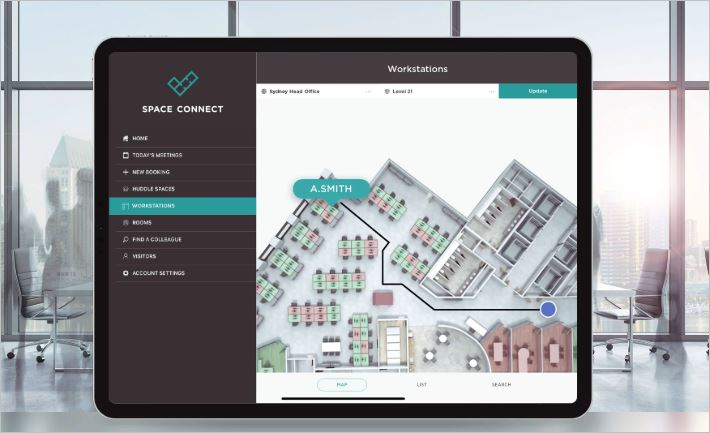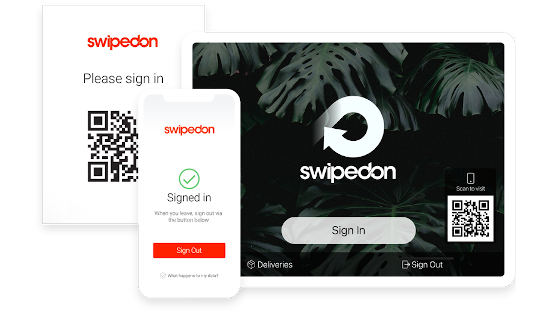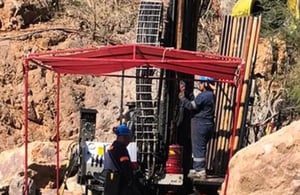Smartspace Software PLC (LON:SMRT) Chief Executive Officer Frank Beechinor caught up with DirectorsTalk for an exclusive interview to discuss their acquisition of Swiped On Limited.
Q1: You’ve been very quiet since the restructuring of the business in July, can you tell us what’s been happening?
A1: As you can imagine, we’ve been very busy behind the scenes, we’ve achieved quite a lot so far even though we haven’t jump from the rooftops about it.
We’ve rebranded the company, we were called Redstoneconnect, we’re now Smartspace Software. We’ve made some new hires, so we’ve brought in some new senior people in the team, so we’ve appointed a new Chief Customer Officer who is going to be responsible for implementation and we’ve got a new CTO joining. We’re very busy on the sales front, got quite a few things on the go, a lot of existing customers and then there was the news this morning.
For the last 3 months we’ve been working on this deal down in New Zealand with the acquisition of SwipedOn which is a management solution. When we did the restructuring and sold the Redstone business back in June, we explained to shareholders that we wanted to use the proceeds to make some acquisitions. So, we haven’t wasted any time really, we’ve just got on with it and the news broke this morning.
Q2: It is clear that acquisitions are a part of your strategy, can you explain a bit more about the rationale behind this?
A2: I think the first thing for people to understand the approach to acquisitions is that we’re not going to be buy and build play, we’re making targeted acquisitions, we’ve identified two or three businesses in three broad categories.
The first category is working up, looking for a competitor in our space who will extend our geographic reach and increase our sales and customer base.
The second category is to buy something in a space where we’re weak functionally in our current platform. We’ve identified two, one is in analytics and the other in visitor management.
The last part of acquisitions that we were looking at was actually an entry-level solution, I’m very keen that we’re active at three levels within the market; entry-level, mid-market and enterprise.
We’ve got a very strong presence in enterprise now, we’ve a growing mid-market but we don’t actually have a presence at entry-level where people can go online, pay for their system on their card and start using it almost straight away. As you’ll probably see from the SwipedOn announcement, that actually ticks two of those three boxes.
So, the view is that if we can find the targets at the right price, we might make another one or two acquisitions in the not too distant future and the end result then will be a business that we focus on growing and getting integrated etc.
Q3: As you mentioned, you announced the acquisition of SwipedOn today, why did you select this business?
A3: For a number of reasons really. We ran the slide rule quite a lot of visitor management solutions, we found a few closer to home, I mean you can imagine 12,000 miles isn’t exactly on our doorstep, but they were with a number of challenges.
There was one business that was actually located on the continent, easily accessible from here but they’ve done a recent funding round and they were talking about a valuation of £20 million which you’re not going to pay, and they were dissimilar size from the SwipedOn business. We looked at some UK-based businesses but the problem we found there was the technology wasn’t great, they didn’t have a great management team in the sense of having the experience, they had the enthusiasm, and they didn’t have the geographical reach, they sold predominately in the UK with a much smaller customer base.
So, we settled on SwipedOn really for three key reasons; the size, the space and its geographical reach. It’s active in 39 countries, very strong management with good experience, the guy who heads up sales there was one of the first employees in Vend which is one of the big SaaS success stories out of New Zealand and he went and worked in two other businesses as well, both SaaS businesses. They’ve got a very strong CTO there, the business has got 19 staff, so they’ve got a strong development base which allows us to build out from.
The last reason we selected them is they really bought into our vision because we want to be a dominant player in the workplace optimisation market and they’re having good solutions in this space. Their aspirations of doing that the other way but felt they couldn’t do it on their own and for us then, it’s about combining the two. Ultimately, we want to be a global business so the geography, to a large extent, is academic and being a SaaS business, we can manage it closely here without the need to be onsite.
So, that’s what led us to the final decision to go with SwipedOn.
Q4: I was just going to say, why New Zealand? It is, as you say, 12,000 miles away.
A4: We could only go one times on further to get further and we’d be on the way back to the UK again! In an ideal world, that business would just be down the road from us but at the end of the day, it’s about finding the right business, they sell globally and it’s their expertise we’re interested in.
We want to use that business to build out these products at entry-level and they’ve got the appetite to do that. The cost of labour down there is about half what you pay in the UK and finding good talent is relatively easy so being able to scale a team there is very good. The software itself actually sits on a server in Amazon in Ohio and they transact, as I say, in about seven or eight different currencies. So, they’re capable of taking customers anywhere, in fact as it happens they have about 600 customers in the UK out of their current base of 2,200.
Q5: How does entry-level SaaS fit with your business model?
A5: Very well really. One of the things I’m worried about and it’s a comment one institutional investor made earlier this year when we indicated we were getting out of the Redstone business, one of the problems with that business is we had quite spiky revenue. You get a big deal in, then you spend time implementing it and then you’ve got to wait for the next one and as a result, you end up with a revenue line that could be sporadic and if a deal didn’t come or we lost a deal, that had a huge impact on our numbers.
My ambition for Smartspace Software, if I was to paint a picture of a good month for us, we’d be great to sign up one enterprise customer, be fantastic then to have maybe 10/15 mid-market customers, some of who we sell direct and some through our channel partners, and then at the entry-level we’d probably have another 100 or more signing up that month where no human got involved with the sales process.
I think by having something at the entry-level, it gives us the robustness around the revenue which I think is really important and secondly, it also gives us really good cross-sell and upsell opportunities. I’ve just come back from New Zealand and just the other day I was there when a deal came in from a major French manufacturer, but it was for a single site and you can see what happens there, one site guy buys it, they like it, it’s not a big commitment and then you find very quickly other sites in the same business. Those represent great opportunities for us to upsell to a mid and enterprise solutions as well.
Ultimately, it’s about robustness of revenue and that being dependent on a small number of very big clients and I’m really keen to spread it out as quickly as possible.
Q6: So, where do you see Smartspace Software going from here?
A6: We want to be global and space optimisation is a really interesting market right now and it’s not just in the UK, if you look at the research by people like Verdantix, they’re looking at 25% compound growth in Europe and in the US and in the Far East as well.
What we’re finding is more and more people are becoming very conscious of the need to optimise their space, a typical desk in London costs about £28,000 to run and these businesses are reshaping and changing to fit with the current times. We’ve got examples now of clients where they operate in an agile ‘hot desk’ environment, they’re actually averaging about 1.8 employees per desk, there’s one customer I know that saved on £3 million a year just by optimising their space.
So, we really want to be the number one player in this space, it’s very fragmented from a competitors perspective and I think we have an opportunity now to really have one really hard push as being the leading vendor in this space, helped by the fact of course that our technology is very much at the leading edge. We hope, we think this is better than a lot of the other suppliers out there.






































